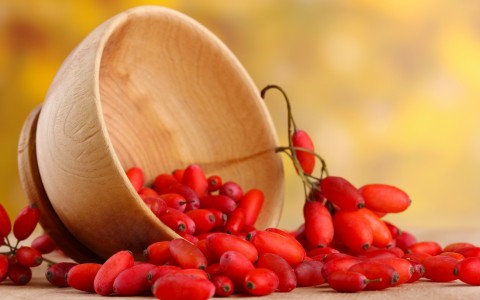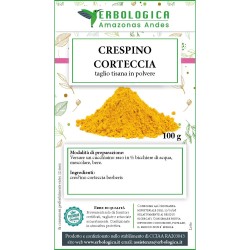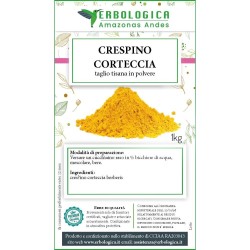
Crespino benefici usi e controindicazioni
Introduzione al crespino
Il crespino, noto anche come Berberis vulgaris, è un arbusto spinoso originario dell'Asia e dell'Europa settentrionale. È stato utilizzato per secoli nella medicina tradizionale per le sue proprietà benefiche per la salute. In questa guida completa, esploreremo la storia e gli usi tradizionali del crespino, il suo profilo nutrizionale e i suoi benefici per la salute, nonché le precauzioni da prendere nel suo utilizzo.
Storia e usi tradizionali del crespino
Il crespino è stato utilizzato per scopi medicinali fin dall'antichità. Le sue radici, le foglie e i frutti sono stati impiegati per trattare una varietà di disturbi, tra cui disturbi gastrointestinali, infezioni, problemi cardiaci e diabete. Inoltre, il crespino è stato spesso utilizzato come colorante naturale per tessuti e alimenti. Nel corso dei secoli, questa pianta ha acquisito una reputazione come rimedio naturale per molti disturbi comuni.
Profilo nutrizionale e benefici per la salute del crespino
Il crespino è ricco di nutrienti e contiene una varietà di composti benefici per la salute. È una fonte eccellente di vitamina C, vitamina A, potassio e fibre. Questi nutrienti sono essenziali per il sano funzionamento del sistema immunitario, la salute degli occhi, la regolazione della pressione sanguigna e la salute del tratto digestivo. Inoltre, il crespino contiene un gruppo di composti chiamati berberine, che sono noti per le loro proprietà antiossidanti e anti-infiammatorie.
Proprietà antiossidanti e anti-infiammatorie del crespino
Le proprietà antiossidanti del crespino lo rendono un potente alleato nella lotta contro i radicali liberi nel corpo. I radicali liberi sono molecole instabili che possono danneggiare le cellule e contribuire allo sviluppo di malattie croniche. L'assunzione regolare di crespino può aiutare a ridurre lo stress ossidativo e proteggere il corpo da danni cellulari. Inoltre, il crespino ha dimostrato di avere proprietà anti-infiammatorie, che possono contribuire a ridurre l'infiammazione cronica nel corpo.
Crespino e salute digestiva
Il crespino è stato tradizionalmente utilizzato per favorire la digestione e trattare disturbi gastrointestinali come diarrea e mal di stomaco. I composti presenti nel crespino possono aiutare a ridurre l'infiammazione e l'irritazione nel tratto digestivo, favorendo una migliore digestione e assorbimento dei nutrienti. Inoltre, il crespino può aiutare a stimolare la produzione di bile, che è essenziale per la digestione dei grassi.
Il ruolo del crespino nel sostenere la funzione immunitaria
Il sistema immunitario svolge un ruolo vitale nella protezione del corpo dalle infezioni e dalle malattie. Il crespino contiene composti che possono sostenere la funzione del sistema immunitario, aumentando la produzione di cellule immunitarie e migliorando la risposta del sistema immunitario alle infezioni. Inoltre, il crespino può aiutare ad alleviare i sintomi del raffreddore e dell'influenza, come tosse e congestione nasale.
Crespino per la salute del cuore e la regolazione dello zucchero nel sangue
La salute del cuore e la regolazione dello zucchero nel sangue sono due aspetti cruciali per il benessere generale. Il crespino può svolgere un ruolo importante in entrambi questi ambiti. Le proprietà antinfiammatorie e antiossidanti del crespino possono contribuire a ridurre l'infiammazione nelle arterie e a prevenire la formazione di placche. Inoltre, il crespino può aiutare a regolare i livelli di zucchero nel sangue, fornendo un supporto naturale per le persone con diabete o pre-diabete.
Crespino come agente antimicrobico
Il crespino ha dimostrato di avere proprietà antimicrobiche, che lo rendono un alleato naturale nella lotta contro le infezioni batteriche, fungine e parassitarie. I composti presenti nel crespino possono inibire la crescita di microrganismi patogeni nel corpo, contribuendo a prevenire o trattare infezioni come la candida, la diarrea batterica e la malaria. Tuttavia, è importante ricordare che il crespino non deve sostituire i trattamenti medici convenzionali per le infezioni gravi.
Uso sicuro e precauzioni del crespino
Sebbene il crespino sia generalmente considerato sicuro quando assunto nelle dosi consigliate, ci sono alcune precauzioni da prendere. Il crespino può interagire con alcuni farmaci, compresi gli anticoagulanti e i farmaci per il diabete. Inoltre, le donne in gravidanza o che allattano dovrebbero evitare l'uso del crespino, in quanto potrebbe interferire con lo sviluppo del feto o influire sulla produzione di latte materno. È sempre consigliabile consultare un medico prima di utilizzare il crespino come parte del proprio regime di salute.
Come incorporare il crespino nella propria dieta
Il crespino può essere utilizzato in diversi modi per arricchire la propria dieta. I frutti del crespino possono essere mangiati freschi o utilizzati per preparare marmellate e succhi. Inoltre, le foglie e le radici del crespino possono essere utilizzate per preparare un tè benefico per la salute. È possibile trovare ricette che utilizzano il crespino online o nei libri di cucina specializzati.
Integratori di crespino: cosa cercare e raccomandazioni di dosaggio
Gli integratori di crespino sono disponibili sul mercato e possono essere un modo conveniente per beneficiare delle proprietà benefiche di questa pianta. Quando si sceglie un integratore di crespino, è importante cercare prodotti che siano di alta qualità e che contengano un'alta concentrazione di principi attivi. Inoltre, è consigliabile seguire le dosi raccomandate sull'etichetta del prodotto o consultare un professionista della salute per le raccomandazioni personalizzate.
Dove trovare prodotti a base di crespino
I prodotti a base di crespino possono essere acquistati in erboristeria, negozi di alimenti naturali e online. È importante assicurarsi di acquistare prodotti da fonti affidabili e di qualità per garantire che si stia ottenendo il massimo beneficio dalla pianta.
Conclusioni
In conclusione, il crespino è un arbusto con una lunga storia di utilizzo nella medicina tradizionale. Le sue proprietà antiossidanti, anti-infiammatorie e antimicrobiche lo rendono un alleato naturale per la salute del cuore, la regolazione dello zucchero nel sangue, la salute digestiva e il sistema immunitario. Tuttavia, è importante prendere le precauzioni necessarie e consultare un medico prima di utilizzare il crespino come parte del proprio regime di salute. Speriamo che questa guida completa ti abbia fornito tutte le informazioni necessarie per comprendere i benefici nascosti del crespino e utilizzarlo in modo sicuro ed efficace.



